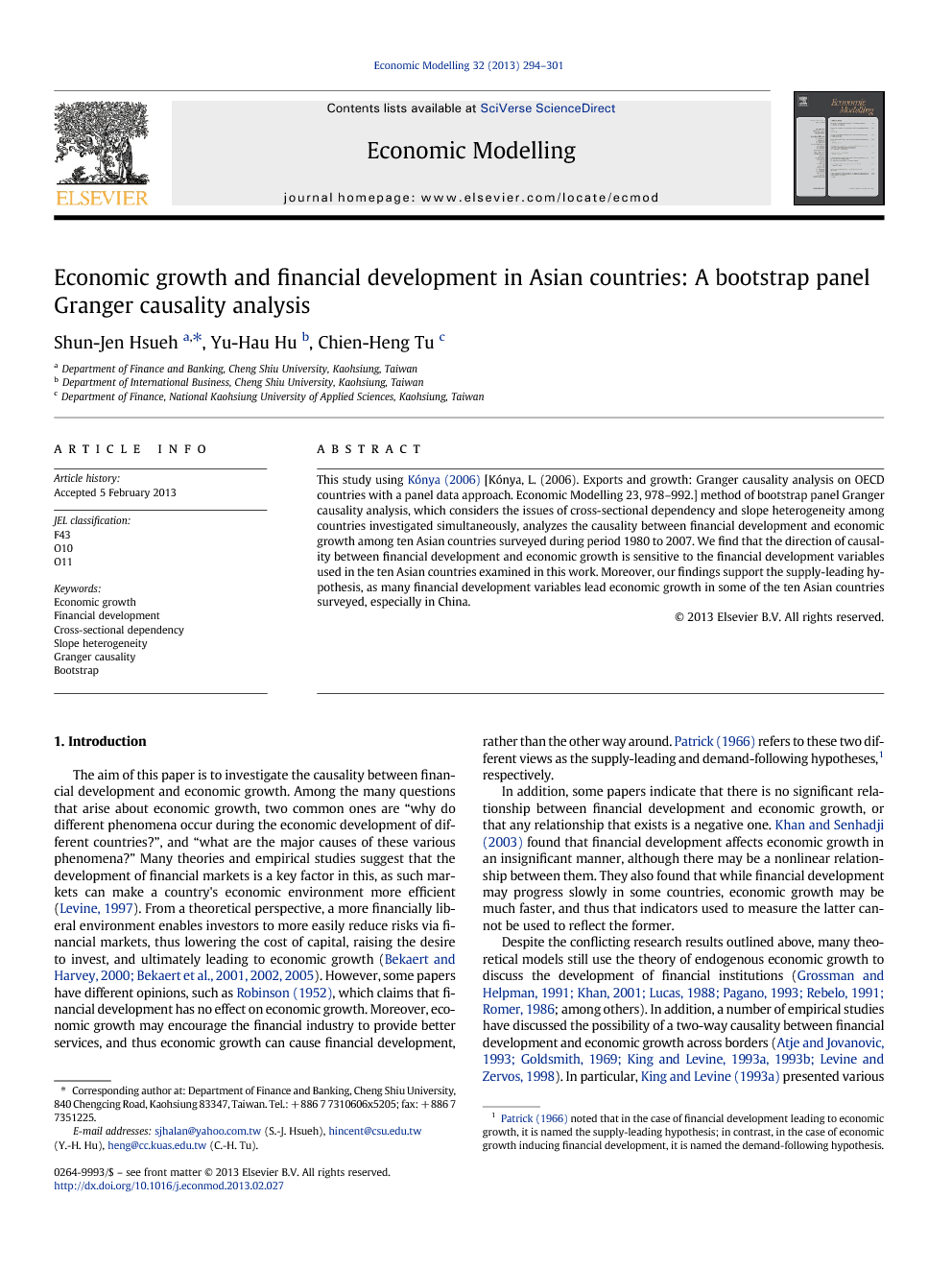ترجمه فارسی عنوان مقاله
رشد اقتصادی و توسعه مالی در کشورهای آسیایی:تجزیه و تحلیل علی پانل گرنجر بوت استراپ
عنوان انگلیسی
Economic growth and financial development in Asian countries: A bootstrap panel Granger causality analysis
| کد مقاله | سال انتشار | تعداد صفحات مقاله انگلیسی |
|---|---|---|
| 12834 | 2013 | 8 صفحه PDF |
منبع

Publisher : Elsevier - Science Direct (الزویر - ساینس دایرکت)
Journal : Economic Modelling, Volume 32, May 2013, Pages 294–301
ترجمه کلمات کلیدی
- رشد اقتصادی - توسعه مالی - وابستگی مقطعی - عدم تجانس شیب - علیت گرنجر - بوت استرپ
کلمات کلیدی انگلیسی
Economic growth,Financial development,Cross-sectional dependency,Slope heterogeneity,Granger causality,Bootstrap

